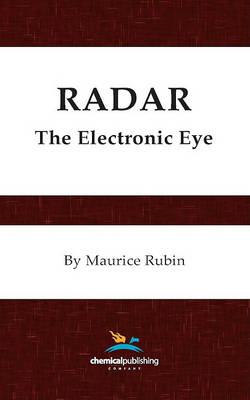Contents
INTRODUCTION
1. RADAR IN WAR
What Radar is
Radar and the U-boats
Radar in Naval Battles
General Characteristics and Requirements
2. RADAR DISTINGUISHED FROM RADIO
Relations among Frequency, Wave Length, Velocity
Comparison of Power Transmitted and Received
Power Received by a Radar Receiver
Advantages of Microwaves
3. TRANSMISSION LINES, WAVE GUIDES, CAVITIES
Characteristic Impedance of Infinite Line
Electric and Magnetic Fields in Wave Guides
Modes in Wave Guides
The Magic or Hybrid T
Resonance Effects in Wave Guides
Evolution of the Cavity Resonator
Segments of Transmission Lines
Filters for Wave Guides
4. TUBES FOR RADAR OSCILLATORS
Ineffectiveness of Ordinary Vacuum Tubes
Movement of Charge Produces Current
Operation of Magnetrons
Manufacture of Magnetrons
Klystrons
5. THE RECEIVER
General Requirements of Radar Receiver
Requirements of Superheterodyne in Radar
Radar Crystals
Local or Beating Oscillator
Intermediate Amplifier
Need for Frequency Control
Details and Operation of Discriminator
Video Amplifier
6. MODULATORS AND WAVE SHAPERS
Phase Relations
Production of sawtooth waves
Multivibrators
Electronic Switch
Blocking Oscillator
Pulse Transformer
Modulator with Saturable Core Reactor Switch
7. INDICATORS AND CATHODE RAY TUBES
Types of Indicators
Electrostatic Cathode Ray Tube
Cathode Ray Tube Screens
Magnetic Cathode Ray Tube
Sweep Circuit and Amplifier
Producing Sweeps for Magnetically Controlled Indicators
8. ROTARY INDUCTORS
Synchros
Types of Synchro Combinations
Synchro-generator
Synchro-motor
Resolvers
D.C. Selsyns
Servos
Use of Servo-Amplifier with D.C. Motor
Servo Employing an Amplidyne
9. TRANSMIT-RECEIVE DEVICES
Purpose of T-R Switch
Operation of T-R Switch
Details of T-R Switch
Cause of ""Spike"" in Discharge
Life of T-R Tube
Details of Switching Action
10. ANTENNAS
Antenna as Transmission Line
Character of Fields Around Antennas
Use of Reflectors with Antennas
How Antennas are fed
Effect of Earth on Transmission
Radar Line of Sight
Metal Lens Antenna
II. OBSERVATIONS ON RADAR SYSTEMS
Simple Radar in Block Form
Three-centimeter Radar System
Ten-centimeter Radar System
Size of Target and Width of Beam
Factors Determining Range of Radar
Strength of Echo
12. MEASUREMENTS AND TESTING
Measurements of Fields Important in Radar
Wave Meters
Echo Box
Measurement of Low Power with Thermistor
Measuring Loss in Dielectrics
Care and Measurements of Magnetron
Microwave Signal Generator
13. FUNDAMENTAL COMPONENTS IN RADAR
Materials and Construction of Wire-wound Resistors
Uses of Thermistors
Materials and Properties of Coils
Impedance of Transmission Lines in Practice
Electromagnetic Delay Lines
Lines with Distributed Parameters
Methods of Varying Delay in Lines
Bandwidth of Piezo-Electric Crystals
Resistance Wire
Treatment of Winding
Noise
Variable Condensers for Shift in Phase
Converters
Inverters
Vibrators
Circuit of a Vibrator
General Requirements of Relays
Magnetic Circuits of Relays
Temperature Limitations of Relays
Relation of Air Gap to Relay Operation
14. RADAR IN PEACETIME
Guiding Airplanes for Landing
Use of Beacons
Navigating with Loran
Radar as Altimeter
Use of Radar to Prevent Collisions
Corner Reflectors
Limits of Radar
Pseudo-Radar
Radar in the Future
GLOSSARY
APPENDIX
INDEX
- ISBN13 9780820600871
- Publish Date 3 May 1963
- Publish Status Active
- Out of Print 30 June 2021
- Publish Country US
- Imprint Chemical Publishing Co Inc.,U.S.
- Format Hardcover
- Pages 344
- Language English
